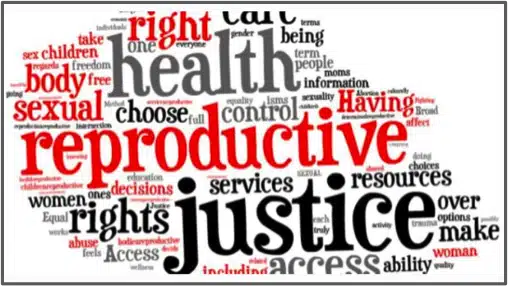
Abortion is now illegal or heavily restricted in at least 15 states following the Supreme Court’s historic decision in June to overturn Roe v. Wade. At least nine other states have laws in place that pave the way to ban or severely restrict access to abortion.
(See below for a list of these states.)
Where Abortion is Currently Banned:
Alabama — A near-total ban on abortion is in effect. On June 24, a U.S. district court lifted an injunction on the state’s 2019 law banning abortion. (Last updated July 23)
Arkansas — A near-total ban on abortion is in effect. On June 24, the state’s attorney general implemented a trigger law originally passed in 2019 which bans abortion. (Last updated July 23)
Georgia — A law banning abortions after roughly six weeks is in effect. The 2019 law had been challenged, but a judge ruled in favor of the ban. It took effect July 20. (Last updated Aug. 5)
Idaho — A near-total ban on abortions passed in 2020 went into effect August 25th, with some exceptions. Lawsuits at the state and federal level challenging the ban are in progress. (Last updated Aug. 25)
Indiana — Indiana passed legislation August 5 banning abortion with few exceptions. The ban took effect September 15. A lawsuit arguing the new law violates the state constitution was filed August 30th. Another lawsuit was filed September 8th arguing the law violates Indiana’s Religious Freedom Restoration Act. (Last updated Sept. 16)
Kentucky — Kentucky’s near-total abortion ban went into effect on June 24. An additional state law bans abortions after six weeks of pregnancy. Both bans were blocked by the courts June 30, then reinstated August 1. A lawsuit arguing the bans violate the state constitution continues. A state constitutional amendment regarding abortion will be on the ballot in November. (Last updated Aug. 19)
Louisiana — A near-total ban is in effect. On June 24, Louisiana’s 2006 trigger ban went into effect. It was blocked by the courts at least twice. A lawsuit challenging the law continues. On August 12, the Louisiana Supreme Court rejected an appeal filed by plaintiffs in the case, allowing the state’s ban to remain in effect. (Last updated Aug. 12)
Mississippi — The state’s near-total ban on abortion was enacted in 2007 and went into effect on July 7. Mississippi’s bid to ban abortion after 15 weeks was at the center of the U.S. Supreme Court decision to overturn Roe v. Wade on June 24. (Last updated July 23)
Missouri — A near-total ban on abortion has been in effect since June 24. (Last updated July 23)
Oklahoma — A near-total ban on abortion went into effect June 24. A law that went into effect on August 25 makes performing an abortion a felony. (Last updated Aug. 25)
South Dakota — A near-total ban on abortion took effect on June 24. On July 1, the governor also signed a ban on telemedicine abortions. (Last updated July 23)
Tennessee — A near-total ban on abortion went into effect August 25. (Last updated Aug. 25)
Texas — A near-total ban on abortion passed in 2021 went into effect August 25. The trigger law also increases the civil and criminal penalties for performing abortions. (Last updated Aug. 25)
West Virginia — West Virginia passed legislation on September 13 banning abortion with few exceptions. The ban took effect September 16, after Gov. Jim Justice signed it into law. (Last updated Sept. 16)
Wisconsin — A pre-Roe abortion ban from 173 years ago is under dispute. The state’s attorney general has said he does not plan to enforce it, and filed a lawsuit challenging the ban. Abortion care is largely unavailable. (Last updated August 26)
Where the Abortion Ban is On Hold:
Iowa — A six-week abortion ban from 2018 was blocked by the courts. Iowa’s governor has asked the state courts to lift the injunction against the law. Iowa also has a law in effect banning abortion at 22 weeks or later. (Last updated Aug. 12)
Michigan — A Abortion is currently legal. A pre-Roe, near-total ban on abortion from 1931 is still on the books. On Sept 7th, a Michigan judge ruled that ban violates the state constitution. A constitutional amendment affirming a right to “reproductive freedom” will appear on ballots in Michigan this fall. (Last updated Sept. 9)
North Dakota — A near-total ban was planned to take effect August 26, but a judge blocked it pending litigation. The ban is a trigger law passed in 2007. The state’s only abortion clinic has sued, arguing the ban violates the state constitution. (Last updated Aug. 26)
Ohio — A ban on abortion at roughly six weeks was temporarily blocked by a judge September 14. A lawsuit filed by the Ohio ACLU and reproductive health clinics to permanently overturn the ban continues. (Last updated Sept. 15)
South Carolina — On August 17, the South Carolina Supreme Court temporarily blocked the state’s ban on abortion after six weeks of pregnancy, which had taken effect in June. A bill to totally ban abortion is under consideration in the South Carolina legislature. (Last updated Aug. 18)
Utah — A near-total ban is blocked by the courts and abortion is currently legal, with restrictions. A law banning abortion after 18 weeks is in effect. (Last updated July 23)
Wyoming — A near-total ban abortion is currently delayed by court order. Six plaintiffs have sued, arguing the ban violates the state constitution. (Last updated Aug. 11)
Ban status unclear:
Arizona — Abortion is legal, but restricted. A recently-passed 15-week ban will take effect in September. A near-total abortion ban from 1901 is still on the books and Arizona’s attorney general filed a motion to lift an injunction against enforcing it. (Last updated July 23)


